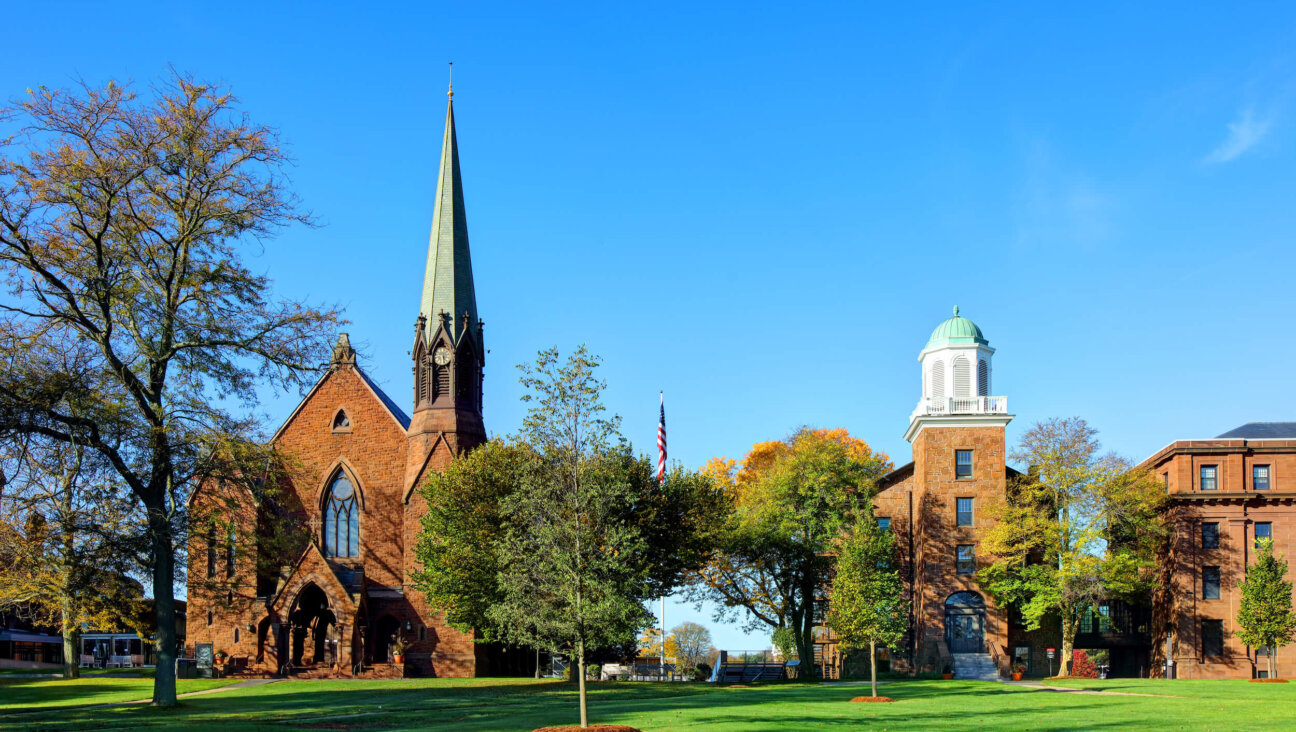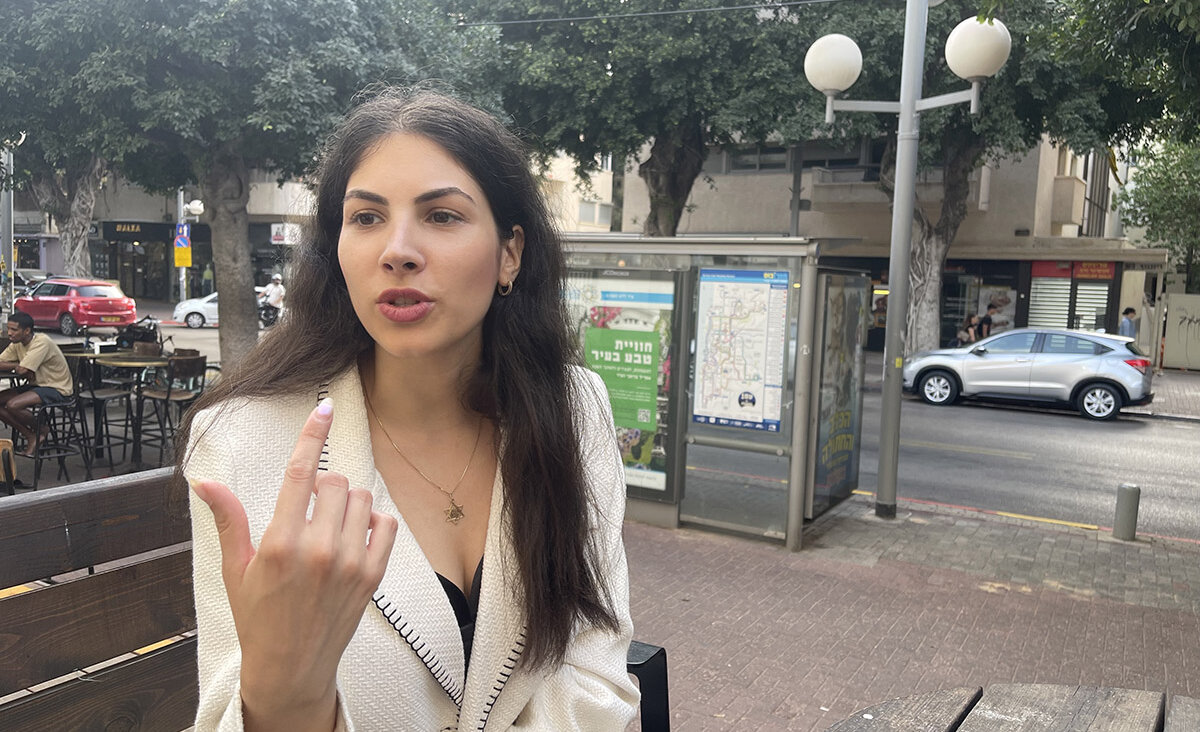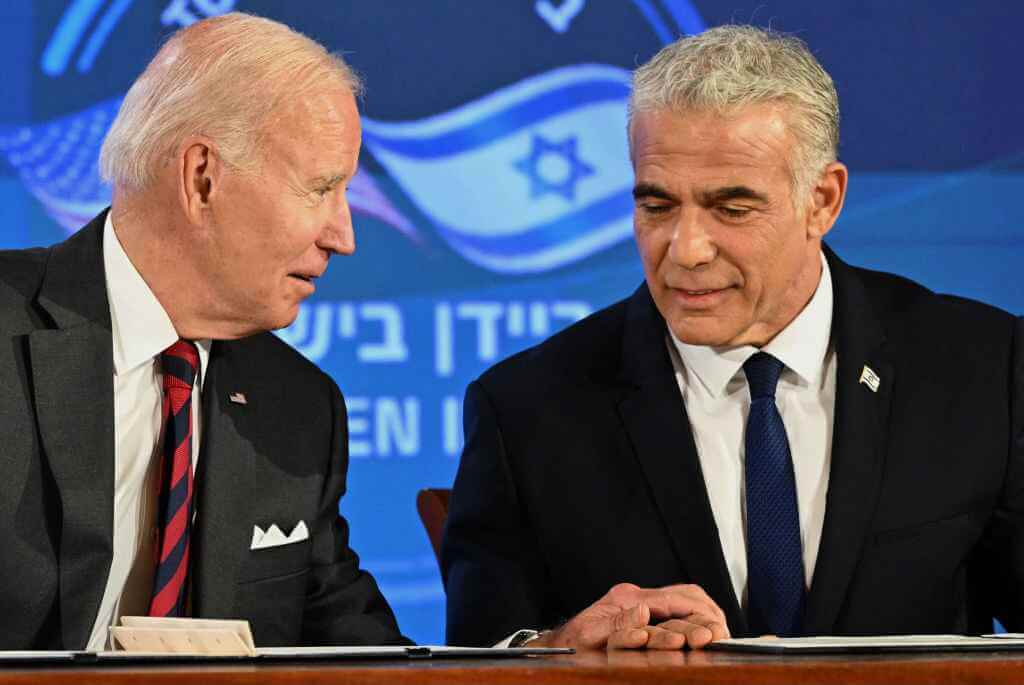How To Stabilize the Declining Jewish Middle — Or Even Reverse It

Elusive Motherhood: When a baby is not in your future. Image by Getty Images
In 2013, the Pew Research Center completed a landmark national study of American Jews. “Portrait of Jewish Americans” found evidence that the number of Orthodox Jews in America is rapidly increasing, and the number of active, Conservative, Reform and other engaged Jews is rapidly declining, with far fewer age 30-49 than among those age 50-69. Underlying this shrinkage and aging of active non-Orthodox Jews are several factors, most prominently:
- high intermarriage rates – 40% among Conservative Jews & 80% among Reform Jews-with non-Jews
- low birthrates: about 1.7 children per household
- high rates of non-marriage and late marriage
- only 7% of the grandchildren of the intermarried are being raised as Jewish-by-religion
American Jewry can be divided into three segments
1) Orthodox
2) Jews who are episodically or partially Jewish, and not active in Jewish life
3) The “American Jewish Middle” who are not Orthodox, but participate and care about Jewish life. Many of them belong to synagogues, celebrate Jewish holidays, raise their children as educated Jews, feel attached to Israel, have Jewish friends, and donate to Jewish cases.
The number of Orthodox Jews is increasing dramatically
Currently, 10% of American Jewish adults are Orthodox, but among Jews under 18 years old, 27% are Orthodox. That number will grow in part because they have many children, typically about 4.1 children per household. They also marry early, extensively, and almost exclusively with other Jews.
The non-Orthodox
For the rest of the American Jewish community, the picture is very different. An average household (not everyone ends up being married) has only 1.7 children per household.
Many children born to a intermarried couples are not raised Jewish. But that is not where the real demographic loss occurs. The real problem emerges when those children have children, only 7% of whom (grandchildren of the intermarried) are raised within the Jewish religion.
Right now over 7,200,000 adults in United States who have at least one Jewish parent. Significantly, 2.1 million of them no longer think of themselves as Jewish, and their number is growing.
From one generation of Jews to the next, we find small numbers of active non-Orthodox Jews. The symptoms of this decline are all around us. We see Conservative and Reform synagogues closing or merging, fewer givers to Jewish causes, fewer non-Orthodox day school and congregational school enrollments, and fewer people who are attached to Israel.
We need cultural diversity within our community moving forward. There are ways to reverse these trends to ensure that our diversity as a community thrives moving forward.
Three basic principles to engage American Jews
1) Build social relationships and connections between Jews.
2) Convey meaningful Jewish content.
3) Target programs that appeal to certain stages of life — preschool kids, school kids and their parents, school children, adolescents, young adults, newly married couples, parents, older people, and other groups sharing demographic and psychographic features.
Adolescence is the critical age
The most critical age for developing an identity and attachment to your religion, culture, and roots is during adolescent time, the period of 13 to 17.
Jewish day schools are highly valuable, but only a minority of American Jewish parents will enroll their children in such schools, even if the costs were reduced. For the majority, seven or more years of congregational schooling yields measurable effects.
Most critical and effective are Jewish summer camps. Unfortunately, not every family can afford to send all their children to such camps. We need to make them by expanding subsidies, building more of them, and build a good number of low-cost Jewish overnight summer camps.
Youth groups are also effective when properly funded and run. Unfortunately, only two major national youth groups are currently well-funded.
Lastly, just as Birthright Israel has proven effective for those 18-26, teen trips to Israel have the potential to transform Jewish lives, and to do so before teens reach campus.
If we can have more such trips and make them more affordable, this will have an effect on Jewish in-marriage, and help people form lifelong relationships within the community.
The College Years and Beyond
In college, Hillel and Chabad have a very positive effect on engaging college students. While there are many Orthodox rabbis on college campuses, not all students identify with them. We need more non-Orthodox rabbis serving on college campuses.
We are only beginning to systematically engage vast numbers of largely unmarried Jews during their young adult years. Among the most promising are programs to invite them to Shabbat tables, participate in Moishe Houses, attend Limmud and other Jewish learning festivals, and establish relationships with Chabad and other engagement-oriented rabbis. Any involvement of young adults in Jewish life increases the chances of their finding and eventually choosing Jewish marriage partners.
Non-Marriage Is a Major Challenge
A half of non-Orthodox Jews between 25-39 years old are not married. The lack of marriage and late marriage means that they will have fewer kids. Additionally, because fewer become parents, fewer have reasons to get involved in Jewish community life.
Getting young parents involved
One effective way to get young parents – both inmarried and intermarried – involved in Jewish life at home and in the community is by making Jewish preschool available for their children. This will get the parents more involved within their community and culture.
The bottom line: We need more Jewish preschools, and more preschools that are heavily subsidized so that young parents can afford them.
Engaging non-Jewish spouses
We can be better about inviting and inspiring non-Jews who marry us to convert to the faith. It can make a significant difference if the newly married are welcomed into the faith and the community, and are treated as one a fully equal member of the community.
Unfortunately, very few such husbands and wives ever do so. Obviously, conversion of non-Jewish spouses means that their children will be raised Jewish.
But even without conversion, we can do a much better job of making our non-Jewish family members feel fully part of the family and community.
It is important to note than an official conversion is not necessary. What is necessary is to make people part of the family and a part of the community. This can be very meaningful, and many people have been inspired by such warm invitations, and explore the religion further on their own.
Prof. Steven M. Cohen is a sociologist of American Jewry. He is a Research Professor of Jewish Social Policy at Hebrew Union College-Jewish Institute of Religion, and Director of the Berman Jewish Policy Archive. Steven has been studying American Jews for over 40 years.

I hope you appreciated this article. Before you go, I’d like to ask you to please support the Forward’s award-winning journalism this Passover.
In this age of misinformation, our work is needed like never before. We report on the news that matters most to American Jews, driven by truth, not ideology.
At a time when newsrooms are closing or cutting back, the Forward has removed its paywall. That means for the first time in our 126-year history, Forward journalism is free to everyone, everywhere. With an ongoing war, rising antisemitism, and a flood of disinformation that may affect the upcoming election, we believe that free and open access to Jewish journalism is imperative.
Readers like you make it all possible. Right now, we’re in the middle of our Passover Pledge Drive and we still need 300 people to step up and make a gift to sustain our trustworthy, independent journalism.
Make a gift of any size and become a Forward member today. You’ll support our mission to tell the American Jewish story fully and fairly.
— Rachel Fishman Feddersen, Publisher and CEO
Join our mission to tell the Jewish story fully and fairly.
Only 300 more gifts needed by April 30

























